Marble floors add a touch of elegance and sophistication to any home. However, maintaining their pristine condition requires special care and attention. Unlike other types of flooring, marble is sensitive to certain cleaning agents and techniques. Knowing how to properly clean and maintain marble floors will help preserve their beauty and ensure their longevity. Here’s everything you need to know about cleaning dirty marble floors effectively and safely.
Understanding the Nature of Marble
Marble is a natural stone composed primarily of calcite, a mineral formed from limestone under extreme pressure and heat. This unique formation process gives marble its characteristic veining and color variations. However, it also makes marble porous and susceptible to staining and etching.
One of the key properties of marble is its softness compared to other stones like granite. This means that marble is more prone to scratches and abrasions. When cleaning marble, it’s essential to use gentle tools and techniques to avoid damaging the surface.
Marble is also sensitive to acidic substances. Common household items like vinegar, lemon juice, and even some cleaning products can etch the surface, leaving dull spots or discoloration. Understanding this sensitivity is crucial for choosing the right cleaning methods and products.
In addition to being porous, marble can absorb liquids quickly, which can lead to stains. Spills should be cleaned up immediately to prevent them from seeping into the stone. Using coasters, placemats, and rugs can help protect marble floors from potential stains.
The natural beauty of marble lies in its unique patterns and colors. However, this variation also means that no two marble floors are the same. When cleaning, it’s important to consider the specific type of marble you have, as different marbles can have varying degrees of porosity and hardness.
Understanding the nature of marble helps in selecting the appropriate cleaning techniques and products. It’s always better to err on the side of caution and use gentle, pH-neutral cleaners to maintain the integrity and beauty of your marble floors.

Preparing for Marble Floor Cleaning
Before diving into the cleaning process, it’s essential to prepare your marble floors properly. This preparation will ensure that the cleaning process is effective and that your floors remain undamaged.
Start by removing any loose dirt and debris from the floor. Use a soft-bristled broom or a vacuum cleaner with a hard floor attachment to sweep the surface. Avoid using a vacuum cleaner with a beater bar, as it can scratch the marble.
Next, prepare your cleaning solution. For regular cleaning, a mixture of warm water and a few drops of pH-neutral dish soap is usually sufficient. Avoid using acidic or abrasive cleaners, as these can damage the marble. You can also use a commercial marble cleaner specifically designed for natural stone.

Fill a bucket with your cleaning solution and gather your cleaning tools. A microfiber mop or a soft cloth is ideal for cleaning marble floors. These materials are gentle on the surface and effective at picking up dirt and grime. Ensure that the mop or cloth is clean to avoid spreading dirt around.
It’s also a good idea to test your cleaning solution on a small, inconspicuous area of the floor before applying it to the entire surface. This test will help you ensure that the solution does not cause any discoloration or damage to the marble.
If your marble floors have stubborn stains or built-up grime, you might need to use a slightly more concentrated cleaning solution or a specialized marble stain remover. However, always follow the manufacturer’s instructions and proceed with caution to avoid damaging the stone.
Preparing properly for marble floor cleaning sets the stage for a successful and safe cleaning process. With the right tools and solutions, you can effectively clean your marble floors without causing any harm.

Step-by-Step Guide to Cleaning Marble Floors
Cleaning marble floors requires a careful approach to ensure that the natural beauty of the stone is preserved. Follow these steps to clean your marble floors safely and effectively.
Start by dipping your microfiber mop or soft cloth into the cleaning solution. Wring out any excess liquid to ensure that the mop or cloth is damp, not soaking wet. Excess water can seep into the marble and cause stains or damage.
Begin mopping the floor in a gentle, circular motion. Work in small sections, ensuring that you cover the entire surface evenly. Avoid using excessive pressure, as this can scratch the marble. Rinse the mop or cloth frequently in the cleaning solution to avoid spreading dirt.
For stubborn spots or stains, use a soft cloth or sponge to gently scrub the area. If necessary, apply a small amount of the cleaning solution directly to the stain. Avoid using abrasive scrubbers or brushes, as these can damage the marble’s surface.
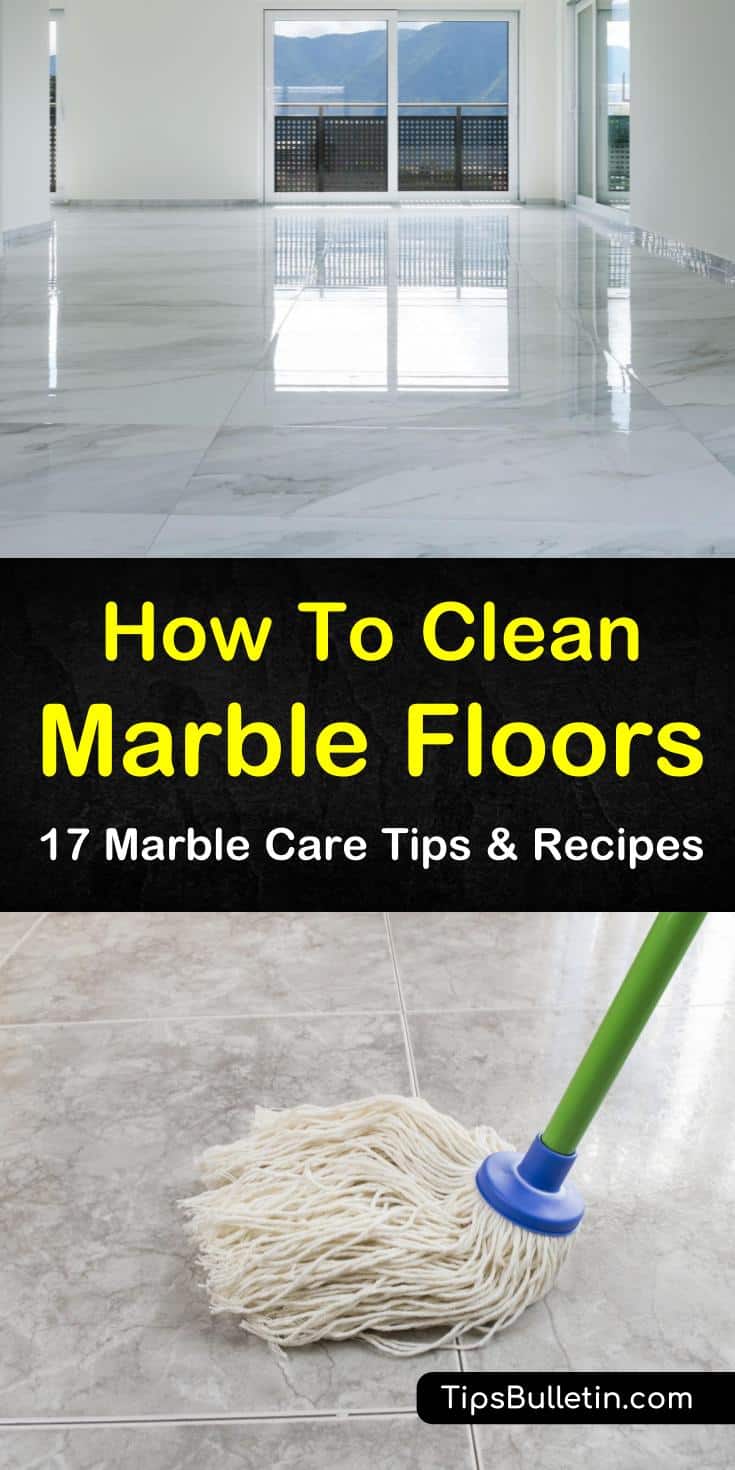
After cleaning, rinse the floor with clean water to remove any residual cleaning solution. Use a clean, damp mop or cloth for this step. It’s important to remove all traces of the cleaning solution to prevent streaks or a cloudy residue from forming on the marble.
Once you’ve rinsed the floor, dry it thoroughly with a clean, dry cloth or towel. Drying the floor helps prevent water spots and streaks, and it ensures that no water is left to seep into the marble. Be sure to dry the floor completely, especially in the grout lines and edges.
Finally, buff the marble to restore its natural shine. Use a dry, soft cloth to gently buff the surface in a circular motion. This step enhances the marble’s luster and gives it a polished appearance.
By following these steps, you can effectively clean your marble floors without causing any damage. Regular cleaning helps maintain the beauty and integrity of the marble, ensuring that it remains a stunning feature in your home.
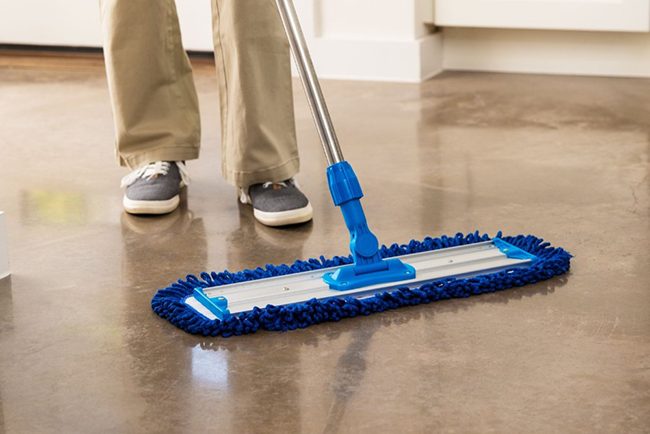
Dealing with Stains and Spills on Marble Floors
Despite your best efforts, stains and spills are bound to happen. Knowing how to deal with them promptly and correctly can prevent permanent damage to your marble floors.
For liquid spills, act quickly to blot the spill with a clean, dry cloth. Avoid wiping, as this can spread the liquid and increase the risk of staining. Once you’ve blotted up the spill, clean the area with a damp cloth and a small amount of pH-neutral cleaner.
Oil-based stains, such as those from cooking oil or cosmetics, can be particularly challenging. Use a paper towel or a soft cloth to blot the excess oil. Then, apply a poultice made from baking soda and water to the stain. Cover the poultice with plastic wrap and let it sit for 24 hours. Afterward, remove the poultice and clean the area with a damp cloth.
Organic stains from foods, drinks, or other natural substances can cause discoloration. To treat these stains, mix a solution of 12% hydrogen peroxide and a few drops of ammonia. Apply the solution to the stain and let it sit for 10 minutes. Rinse the area with clean water and dry it thoroughly.

Ink and dye stains, such as those from markers or hair dye, can be treated with acetone. Apply a small amount of acetone to a cotton ball and gently blot the stain. Be sure to test the acetone on an inconspicuous area first to ensure it does not damage the marble. Rinse the area with water and dry it after treatment.
Rust stains, often caused by metal objects left on the floor, require a different approach. Use a poultice made from a commercial rust remover and a carrier like diatomaceous earth or baking soda. Apply the poultice to the stain, cover it with plastic wrap, and let it sit for 24 hours. Remove the poultice and rinse the area thoroughly.
For particularly stubborn or old stains, consider consulting a professional stone restoration expert. They have the tools and knowledge to safely remove difficult stains without damaging the marble. Regular maintenance and prompt attention to spills can help prevent stains from becoming a long-term issue.
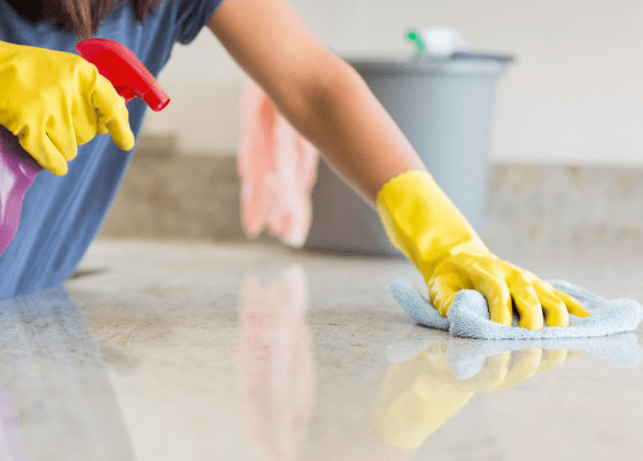
Maintaining Your Marble Floors
Regular maintenance is crucial for keeping marble floors looking their best. Developing a consistent cleaning routine and taking preventive measures can significantly extend the life of your marble flooring.
Sweep or vacuum your marble floors daily to remove dirt and debris. Small particles can act like sandpaper and scratch the marble surface over time. Use a soft-bristled broom or a vacuum with a hard floor attachment to avoid damaging the marble.
Mop your marble floors weekly with a damp microfiber mop and a pH-neutral cleaner. This helps remove any accumulated dirt and keeps the marble looking clean and polished. Avoid using excessive water, as standing water can cause damage.
Protect your marble floors by placing rugs or mats in high-traffic areas, such as entryways and hallways. These mats help catch dirt and debris before it reaches the marble. Choose non-slip mats to prevent accidents and avoid using mats with rubber backing, as they can cause discoloration.

Furniture can also scratch marble floors, so it’s important to use protective pads under the legs of chairs, tables, and other heavy items. Regularly check and replace these pads to ensure they remain effective.
Sealing your marble floors can provide an additional layer of protection against stains and etching. Consult with a professional to determine the best type of sealer for your marble and how often it should be applied. A well-sealed floor is easier to clean and less likely to sustain damage from spills and stains.
Finally, consider polishing your marble floors periodically to restore their shine. Polishing helps remove minor scratches and brings out the natural luster of the stone. You can use a commercial marble polish or consult a professional for a more thorough polishing treatment.
By following these maintenance tips, you can keep your marble floors looking beautiful and extend their lifespan. Regular care and preventive measures make a significant difference in preserving the elegance of marble flooring.

Choosing the Right Cleaning Products for Marble Floors
Selecting the appropriate cleaning products is essential for maintaining the beauty and integrity of marble floors. Using the wrong products can cause damage, so it’s important to choose wisely.
When shopping for marble cleaning products, look for pH-neutral formulas. These cleaners are specifically designed to be gentle on natural stone and do not contain harsh acids or abrasives that can etch or scratch the surface. Many commercial marble cleaners are available that meet these criteria.
Avoid using common household cleaners like vinegar, lemon juice, or ammonia on marble floors. These substances are highly acidic and can cause etching, leading to dull spots and discoloration. Similarly, avoid abrasive cleaners and scouring pads, which can scratch the marble.
For regular cleaning, a simple solution of warm water and a few drops of pH-neutral dish soap is usually sufficient. This gentle cleaner effectively removes dirt and grime without damaging the marble. Be sure to rinse the floor thoroughly after cleaning to remove any soap residue.
If you need a stronger cleaner for stubborn stains or built-up dirt, look for a commercial marble cleaner specifically formulated for natural stone. These products are designed to clean effectively while protecting the marble’s surface. Follow the manufacturer’s instructions for the best results.
For polishing marble floors, choose a high-quality marble polish. These products help restore the shine and remove minor scratches. Apply the polish with a soft cloth, following the product’s instructions, and buff the surface to a high gloss.
When dealing with stains, use specialized marble stain removers or poultices. These products are formulated to target specific types of stains without damaging the marble. Always test any new product on a small, inconspicuous area first to ensure it does not cause any adverse effects.
By choosing the right cleaning products, you can safely and effectively maintain your marble floors. Investing in quality cleaners designed for natural stone ensures that your floors remain beautiful and in excellent condition.
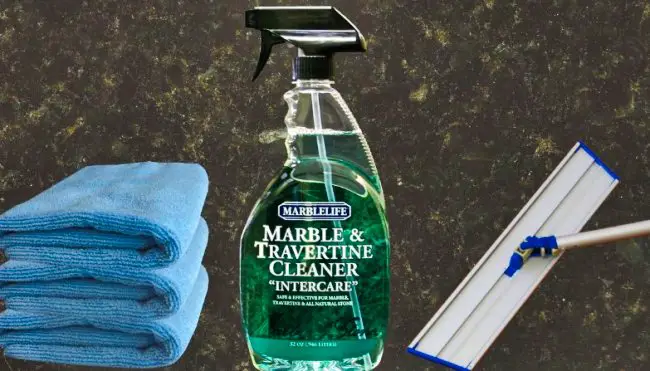
Common Mistakes to Avoid When Cleaning Marble Floors
Cleaning marble floors requires careful attention to detail and the right techniques. Avoiding common mistakes can help preserve the beauty and longevity of your marble flooring.
One of the most common mistakes is using the wrong cleaning products. Acidic or abrasive cleaners can etch or scratch the marble, causing permanent damage. Always choose pH-neutral cleaners specifically designed for natural stone.
Another mistake is using too much water when mopping. Excess water can seep into the marble and cause stains or damage. Use a damp mop rather than a soaking wet one, and dry the floor thoroughly after cleaning.
Skipping the sealing process is a mistake that can leave your marble floors vulnerable to stains and etching. Sealing provides a protective barrier that helps prevent damage. Consult a professional to determine the best sealing schedule for your marble floors.
Failing to clean up spills immediately is another common error. Marble is porous and can absorb liquids quickly, leading to stains. Blot spills promptly with a clean, dry cloth to prevent them from seeping into the stone.
Using abrasive tools like scouring pads or stiff brushes can scratch the marble’s surface. Stick to soft cloths, microfiber mops, and soft-bristled brushes for cleaning. These tools are gentle on the marble and effective at removing dirt.
Finally, neglecting regular maintenance can lead to a buildup of dirt and grime that is difficult to remove. Establish a consistent cleaning routine and take preventive measures to protect your marble floors. Regular sweeping, mopping, and periodic sealing and polishing help keep your floors in top condition.
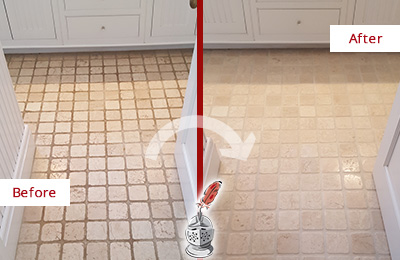
What is the best way to clean marble floors regularly?
The best way to clean marble floors regularly is to use a pH-neutral cleaner and a microfiber mop. Sweep or vacuum the floors daily to remove dirt and debris. Mop weekly with a damp microfiber mop and a gentle cleaner. Avoid using excessive water and always dry the floors thoroughly after cleaning to prevent water spots and damage.
How do I remove stains from marble floors?
To remove stains from marble floors, act quickly to blot spills and use appropriate stain removers. For oil-based stains, apply a poultice made from baking soda and water. For organic stains, use a solution of hydrogen peroxide and ammonia. Ink and dye stains can be treated with acetone, and rust stains with a commercial rust remover poultice. Always rinse the area thoroughly after treatment and test any stain remover on a small, inconspicuous area first.
Can I use vinegar or lemon juice to clean marble floors?
No, you should not use vinegar or lemon juice to clean marble floors. These substances are highly acidic and can etch the marble, causing dull spots and discoloration. Stick to pH-neutral cleaners specifically designed for natural stone to avoid damaging your marble floors.
How often should I seal my marble floors?
The frequency of sealing your marble floors depends on the type of marble and the amount of traffic they receive. Generally, marble floors should be sealed every 6 to 12 months. Consult with a professional to determine the best sealing schedule for your specific marble floors. Regular sealing helps protect the marble from stains and etching.
What should I do if my marble floors become scratched?
If your marble floors become scratched, you can use a marble polish to restore their shine and minimize the appearance of minor scratches. Apply the polish with a soft cloth and buff the surface to a high gloss. For deeper scratches or extensive damage, consider consulting a professional stone restoration expert who can use specialized tools and techniques to repair the marble.
How can I protect my marble floors from damage?
To protect your marble floors from damage, establish a regular cleaning routine and take preventive measures. Sweep or vacuum daily, mop weekly with a pH-neutral cleaner, and dry the floors thoroughly after cleaning. Place rugs or mats in high-traffic areas, use protective pads under furniture, and clean up spills immediately. Regularly seal and polish the marble to maintain its protective barrier and enhance its natural beauty.

Related Posts: